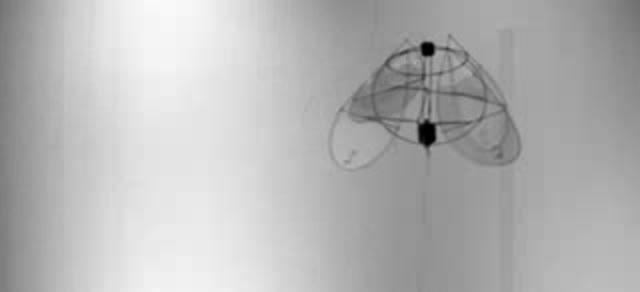WASHINGTON D.C. Nov. 24, 2013 -- Up, up in the sky: It's a bird! It's a plane! It's a . . . jellyfish? That's what researchers have built -- a small vehicle whose flying motion resembles the movements of those boneless, pulsating, water-dwelling creatures.
The work, which will be presented at the American Physical Society's Division of Fluid Dynamics meeting on November 24 in Pittsburgh, demonstrates a new method of flight that could transport miniaturized future robots for surveillance, search-and-rescue, and monitoring of the atmosphere and traffic.
Many approaches to building small aerial robots try to mimic the flight of insects such as fruit flies. The challenge in that, explained Leif Ristroph of New York University, is that the flapping wing of a fly is inherently unstable. To stay in flight and to maneuver, a fly must constantly monitor its environment to sense every gust of wind or approaching predator, adjusting its flying motion to respond within fractions of a second. To recreate that sort of complex control in a mechanical device – and to squeeze it into a small robotic frame – is extremely difficult, Ristroph said.
After some tinkering, he devised a new way of flapping-wing flight that doesn't need any sort of control or feedback system to be stable, and is akin to the swimming motions of jellyfish. The prototype device, weighing just two grams and spanning eight centimeters in width, flies by flapping four wings that are arranged like petals on a flower. While the up-and-down motion of the wings resembles a pulsating jelly,, the device's ultimate fluttering flight may be more similar to that of a moth. The vehicle can hover, ascend, and fly in a particular direction.

A jellyfish-like flying machine hovers in air by flapping its four wings 20 times per second.
(Photo Credit: NYU/L. Ristroph)
In addition to showing that the flying device is indeed stable, Ristroph and Stephen Childress, also at NYU, found that the size of the machine mainly depends on the weight and power of the motor.
The prototype is limited: it's attached to an external power source and can't steer, either autonomously or via remote control. Although researchers are still far away from building a practical robot, these new results show a proof of principle, forming a blueprint for designing more sophisticated and complex vehicles, Ristroph said.
And, he adds, the simplicity of design bodes well for miniaturizing the vehicles. The longstanding goal for researchers has been to shrink flying robots down to the size of a centimeter, allowing them to squeeze into small spaces and fly around undetected. The simpler the better, he said. "And ours is one of the simplest, in that it just uses flapping wings."
The presentation "Hovering of a jellyfish-like flying machine," is at 2:15 p.m. on Sunday, November 24, 2013 in the David L. Lawrence Convention Center, Room 305. ABSTRACT: http://meeting.aps.org/Meeting/DFD13/Event/202303
Source: American Physical Society